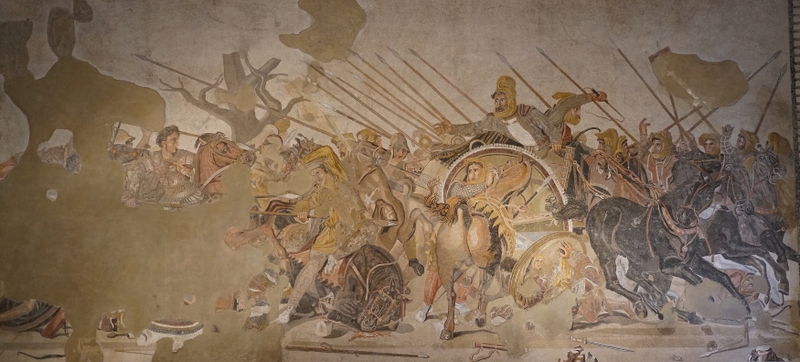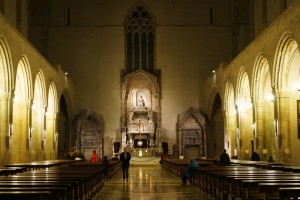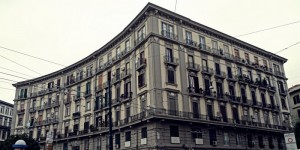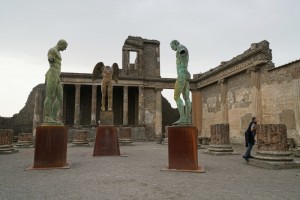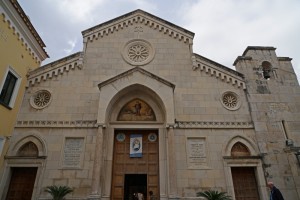Naples, Caserta, Pompeii & Amalfi Coast October 13 – 16, 2016
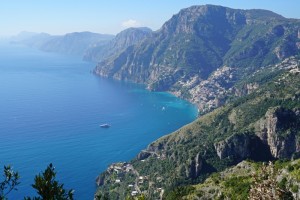 |
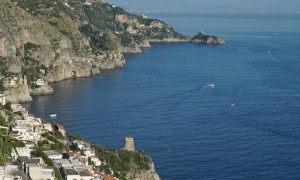 |
October 13 Thursday: Naples
At 9am, we left our villa for Naples with Ben and Carmala and a new driver, Ibrahim. Ben arranged us to stay in a two-bedroom flat at Piazza Carlo III. We had a late lunch at a popular local restaurant Mama’s Kitchen on via Foria. The food is excellent. We had ten different types of antipasti before consuming an enormous quantity of linguine with langostine. The best lunch in Italy!
History of Naples
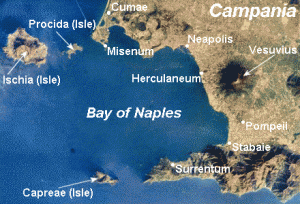 Naples has a long and fascinating history of 2800 years. It is the third largest municipality in Italy and one of the oldest continuously inhabited cities in the world. Bronze age Greek settlements were established in the Naples area in the second millennium BC. During the Roman time, it became a cultural centre with the people maintaining their Greek culture language and customs and elegant villas, public baths, a theater and aqueducts. After the Romans, Naples was part of the Ostrogothic Kingdom before it was ruled as part of the Eastern Roman Empire. A Duchy of Naples was created.
Naples has a long and fascinating history of 2800 years. It is the third largest municipality in Italy and one of the oldest continuously inhabited cities in the world. Bronze age Greek settlements were established in the Naples area in the second millennium BC. During the Roman time, it became a cultural centre with the people maintaining their Greek culture language and customs and elegant villas, public baths, a theater and aqueducts. After the Romans, Naples was part of the Ostrogothic Kingdom before it was ruled as part of the Eastern Roman Empire. A Duchy of Naples was created.
With the decline of the Byzantine power, Naples gained complete independence by 840. In 1137 Naples came under Norman control and joined the Kingdom of Sicily which later passed to the Hohenstaufens, a German royal family. In 1266, the Angevin Duke Charles was crowned by Pope Innocent IV as King who moved the capital from Palermo to Naples and resided in Castel Nuovo. Naples and Sicily were separated in 1458 but remained as dependencies of Aragon under Ferrante. The city prospered becoming a centre of the Renaissance.
In 1501, Naples came under direct rule from France under Louis XII. Then Spaniards won Naples from the French two years later. During the 17th century Naples became Europe’s second largest city after Paris and the largest Mediterranean city. By 1714 the Spanish ceased to rule Naples as a result of the War of Spanish Succession. In 1738, under the Treaty of Vienna Naples was recognised as independent under a cadet branch of the Spanish Bourbons with Charles VII as the king.
In 1815, the kingdoms of Naples and Sicily was combined to form Two Sicilies with Naples as the capital city until the unification of Italy in 1861. It was the most -bombed Italian city during WWII. Despite modest economy recovery in recent years, it is still suffering from political and economic corruption with a high rate of unemployment.
Naples is an open air museum with a total of 448 historical churches, numerous museums, gardens and villas. It has the largest historic city centre in Europe covering 1,700 hectares. The most prominent forms of architecture visible today are the Medieval, Renaissance and Baroque styles. Its historic centre is a World Heritage Site.
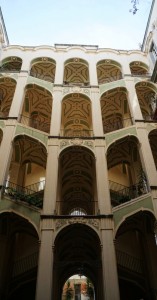 |
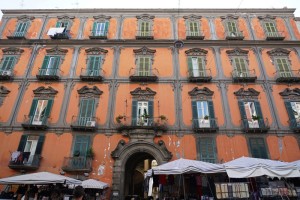 |
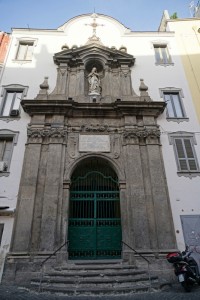 |
Bing and I were in Naples with Lillian and Ellen in the summer of 1988. We stayed in a pension near the train station. It was so hot that we did not do much after coming back from a visit to Pompeii and Capri. This time it’s also impossible to explore Naples in full as we only had a free afternoon. Hence, we decided to focus on the National Archaeological Museum which would prepare us for our visit to Pompeii and Herculaneum. On the way to the museum, we took a side street which looked like a local market. It had once been a rich neighbourhood with a row of beautiful mansions and five churches in less than 150m! But the streets are filthy with rubbish everywhere. We were told the city was controlled by mafia and garbage collection has always been a problem.
The museum spreading over four floors has a great collection of exhibits from Greco-Roman, Pompeii and Egypt. The exhibits from Pompeii including mosaics, frescoes and statutes with English explanations. They gave me some ideas about the key buildings I would see the next day. There is a small corner on the second floor with exhibits for adults only (i.e. exortic frescoes and items)!
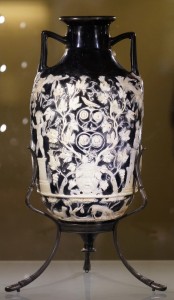 |
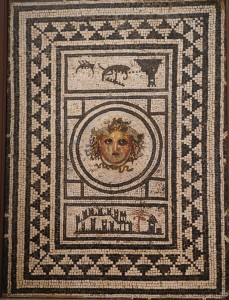 |
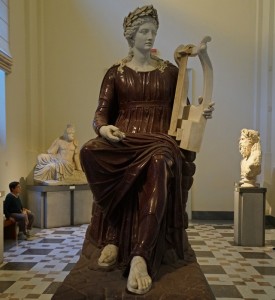 |
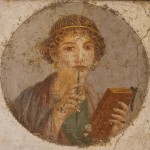 |
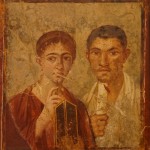 |
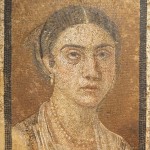 |
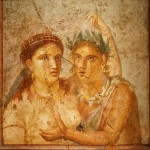 |
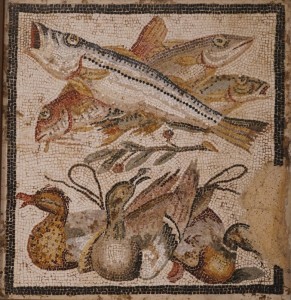 |
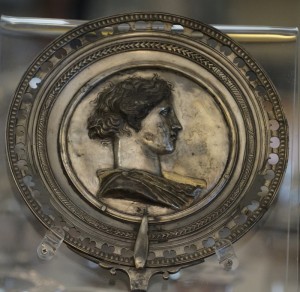 |
We spent two exhausting hours in the museum. It’s 5pm when we came out to stroll along via Costantinopoli. We found two impressive churches namely the Gesù Novo and Santa Chiara. Both were having their service. They have totally different architectural styles and I like the latter. But it’s too late to visit Santa Chiara’s famous cloister.
I always find Italy fascinating after sunset when the people suddenly converge in the street. We walked along via b Croce and ventured a short distance into the Centro Antico near the university. The area was dark with derelict buildings. My friends are not comfortable as they have heard a lot of horrible stories about Naples. I have a reasonable sense of direction (a colleague used to call me his guide dog!) and can go anywhere with ease. But to put my friends’ mind at ease, we took exactly the same route back. If I were on my own, I would have stopped at S Domenico Maggiore and turned right at via Trunali in order to reach the Duomo. After a brief visit to the Duomo, I would have followed via Duomo which joins via Foria.
We were late by 45 minutes. Ben took us to their flat in a truly Neapolitan quarter. Carmala had already prepared veal and salad for us. At 9pm, we found our way back to our building that must be grand and impressive when it was first built. Today, it looks run-down and in dire need of renovation. I slept on a sofa bed in the sitting room in my down sleeping bag. Since we only had one night in Naples, I would be happy to pay more for a hotel centrally located in a good area around the Piazza del Plebiscito or near via Toledo. It’s a pity that after two visits to Naples, I still have been to its major landmarks including the Castel Nuovo (a historic castle built during the reign of Charles I, the first king of Naples), the Piazza del Plebiscito and the Bay of Naples. I must return to explore this fascinating city one day.
October 14 Friday: Caserta & Pompeii
Royal Palace of Caserta
Our original plan was to spend an hour near the Piazza del Plebiscito before heading to Caserta. As Rupert had left the Wi-Fi egg inside the flat, we had to wait for the owner to come to open the door. The Italians, like the Chinese, are flexible and our owner came in her motorbike in no time!
We decided to drive direct to Caserta where we spent over two hours in the Royal Palace, a World Heritage Site. Built for the Bourbon kings of Naples, it is one of the largest palaces in Europe built in later Baroque and early Neoclassical style during the 18th century. In terms of volume, it is the largest royal residence in the world with over 2 million m³ covering an area of about 235,000m².
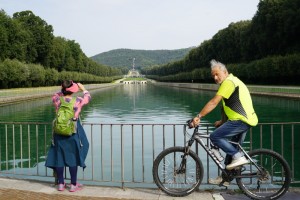 |
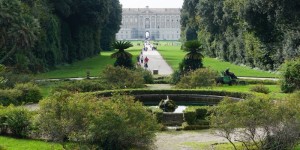 |
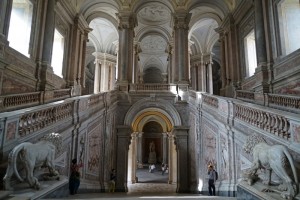 |
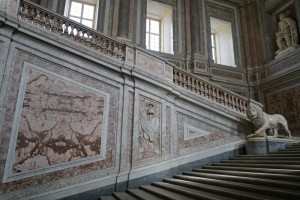 |
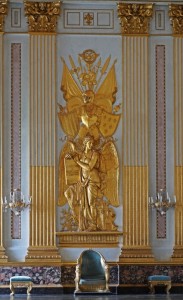 |
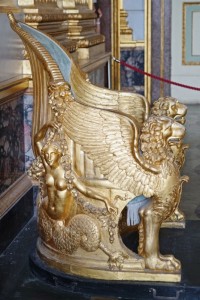 |
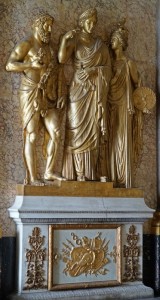 |
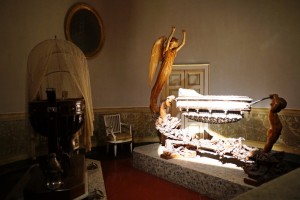 |
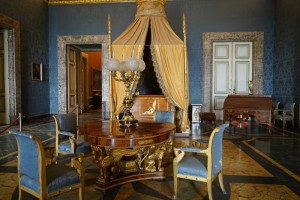 |
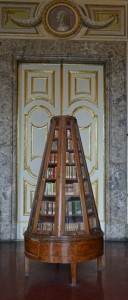 |
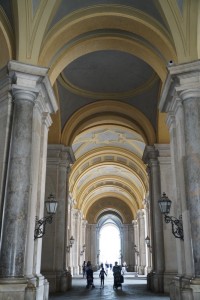 |
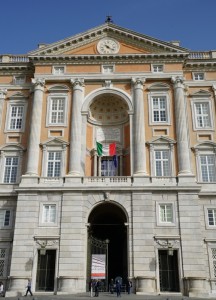 |
We first went to the garden which is expansive. The palace which resembles the palace in Versailles, has five floors with 1,200 rooms. One can easily spend a day enjoying a picnic in the park. After lunch, we moved on to Pompeii and met our guide Anne Marie at 3pm.
The oldest evidence of Pompeii dates back to the late 7th up to the first half of the 6th century BC with a mixed population of Etruscans, Greeks and indigenous people. It was a busy port. From the end of the 5th century, the Samnites descended from the mountains of Irpinia and Sannio. Towards the end of the 4th century, Rome turned its attention to Southern Italy and Pompeii became a Roman colony around 80BC. Pompeii prospered till a violent earthquake struck in 62AD that shocked the entire area surrounding Mt Vesuvius. On August 24, 79AD, Mt Vesuvius erupted suddenly burying Pompeii under ash and lapilli. The city was rediscovered at the end of the 16th century but exploration only began in 1748 under the King of Naples and continues till the present day. The archaeological site divided into nine regions spreads over 66 hectares, 49 of which have been excavated in 1858 under the direction of Giuseppe Fiorelli.
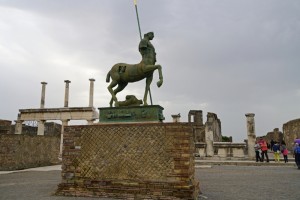 |
 |
Bing and I were in Pompeii but in a different part of this enormous site. This time, we entered from the Porta Marina (Marina Gate) with suburban baths outside the gate in Region VII. The largest and most prominent feature in this region is the expansive Forum with Mt Vesuvius as the backdrop.
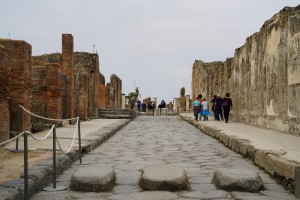 |
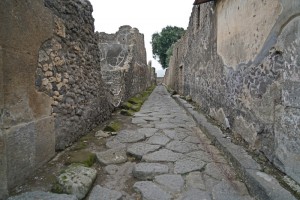 |
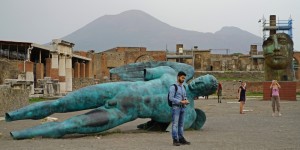 |
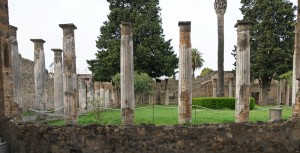 |
The Sanctuary of Apollo, Honorary Arches and Forum Baths are impressive. The Granary with lots of terracotta crockery and some casts of victims of the eruption and the Bakery of Popidio Prisco are interesting.
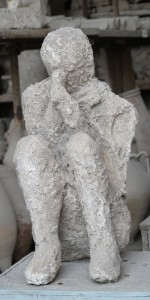 |
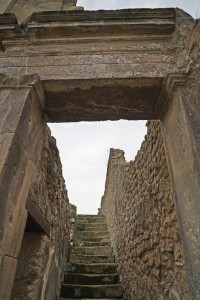 |
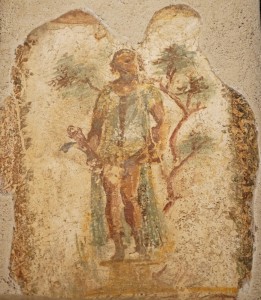 |
We visited the House of Sirico, with many of its mosaics including a large one inspired by the Trojan War in the National Archaeological Museum in Naples. (the mosaics are shown in the Naples section)
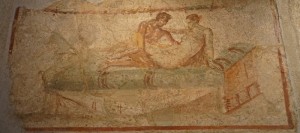 We followed the main road via dell Abbondanza which had a couple of foundations and signs showing the way to the Lupanar, a brothel which has five rooms on the ground floor all fitted with fitted-in bed. There are erotic small paintings on the walls.
We followed the main road via dell Abbondanza which had a couple of foundations and signs showing the way to the Lupanar, a brothel which has five rooms on the ground floor all fitted with fitted-in bed. There are erotic small paintings on the walls. 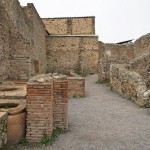
In Region VI, we visited the House of Faun (2nd century BC), House of the Small Fountain, House of the Tragic Poet (with the mosaic of a dog which reads ‘beware of the dog’), Thermopolium (small cook/fast food shops), House of Pansa and House of the Oven. We passed through Region VIII on our way out. We stopped at the Basilica and the Sanctuary of Venus.
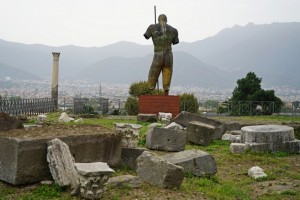 In my view, Pompeii is the world’s largest and best preserved open-air museum. On my first visit in 1988, I apparently visited a small part of the site. The scene I remembered most vividly is the Garden of the Fugitives where 13 victims were found at various points inside the enclosure seized by death. I could also remember the Nocera Gate and the Amphitheater in Regions I and II. This time, we were given a detailed booklet on this vast World Heritage Site which is divided into nine regions. I am now able to trace the path I have taken. It is impossible to see Pompeii in two hours. I shall return one day to stroll around for a day or two with an audio guide.
In my view, Pompeii is the world’s largest and best preserved open-air museum. On my first visit in 1988, I apparently visited a small part of the site. The scene I remembered most vividly is the Garden of the Fugitives where 13 victims were found at various points inside the enclosure seized by death. I could also remember the Nocera Gate and the Amphitheater in Regions I and II. This time, we were given a detailed booklet on this vast World Heritage Site which is divided into nine regions. I am now able to trace the path I have taken. It is impossible to see Pompeii in two hours. I shall return one day to stroll around for a day or two with an audio guide.
Our villa is not far from Sorrento. But the traffic was heavy and we moved at snail pace till we could turn off the main road. The winding road is very narrow with cars parking on one or both sides of the road. I can drive but dare not to drive here! Ibrahim with the aid of GPS finally found his way to our villa which is located above a cliff with stunning views of the sea, mountains and nearby islands.
As it was late, Ben arranged us to eat in a pizzeria near the villa. He had over-estimated our appetite and ordered four pizzas for us. At the end, we packed one for breakfast. I shared a one-bedroom apartment with Bing. I slept in a most comfortable sofa-bed in the sitting room with high ceiling. I had one of the best nights of sleep on this trip.
October 15 Saturday: Sorrento & Positano
I did not get up till sometime after 8am. The villa has three self-contained flats. Our flat is located at the street level with two flats below ours. Each flat has its own design with a common blue and white colour theme. There is a fig tree in the garden. I picked ripe ones for breakfast. We had a late breakfast in Aliena’s flat and left for Sorrento at 10am. We had free time till 3pm. Ben and Carmala went to the market and bought a big fish for dinner.
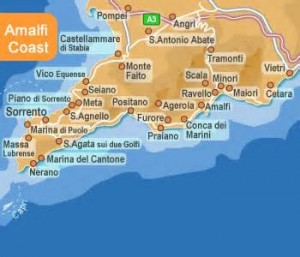 |
Sorrento overlooking the Bay of Naples has been one of Italy’s most popular tourist destinations. Same as Naples, it had Greek influence before coming under Roman’s control. It was later ruled by the Ostrogoth before being part of the Byzantine Empire. It became an autonomous duchy briefly in the 9th century. In the 12th century, it was annexed by the Kingdom of Sicily. In 1861, it was officially annexed to the new kingdom of Italy.
The popular song of “Torna a Surriento” (Come back to Sorrento) in the early 20th century has spread the fame of Sorrento. The town with a small population of about 20,000 is picturesque with spectacular views of the the Bay of Naples, Mt Vesuvius and Capri. It is connected with Amalfi by the Amalfi Coast Drive, a narrow road that threads long the dramatic cliffs above the Tyrrhenian Sea. There is an hourly bus service between Sorrento and Amalfi and regular hydrofoil and fast ferry service to Capri and Naples and a boat a day to Ischia. And many cruise boats along the coast. Easily accessible from Rome and Naples, Sorrento is very touristic with many up-market hotels, shops, cafes and restaurants.
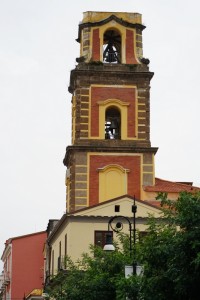 |
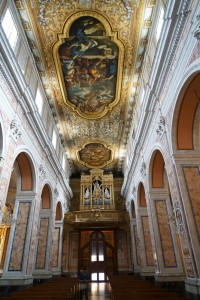 |
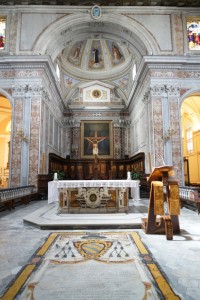 |
We got off at Piazza T. Tasso and walked along via S. Cesareo before returning to Corso Italia to visit the Cathedral (14th century) which has an exhibition of photos by Raffaele Ceentano who went to Calcutta to meet Mother Teresa in 1991. I was lucky to meet Mother Teresa during my study tour to India in 1978.
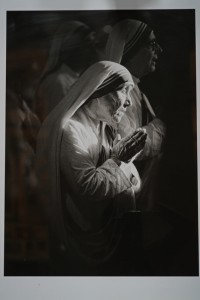 |
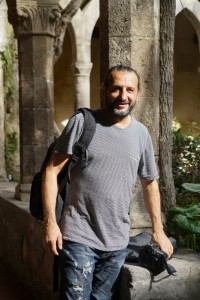 |
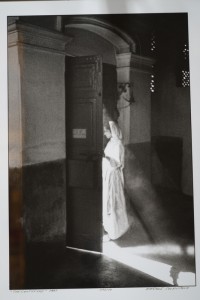 |
The Amalfi Coast, a lemon cultivating region, is famous for its production of Limoncello liqueur. The lemons here are typically long and at least double the size of other lemons with a thick and wrinkled skin and a sweet and juicy flesh without many pips. We had lots of fun in a shop selling coffee beans and another one selling limoncello.
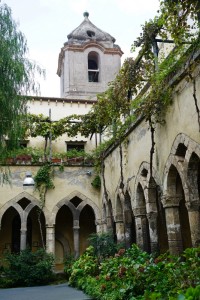 We walked to Piazza della Vittoria and planned to find a good cafe so that we could enjoy the sea view. It started to rain. We stood under a tree with our umbrellas. The shower came and went away quickly. Then we resumed our stroll and passed by a restaurant facing a posh hotel. Instead of having coffee or ice cream after our picnic lunch, we sat down and had a beer, mussels and sardines which cost €20. Not bad! We then visited St Francis Church and discovered two small museums in the courtyard. One with musical boxes is free. But we paid to see Raffaele Ceentano’s photo exhibition. He is a Sorrento artist who made his name when taking pictures of Mother Teresa and her home for the dying in Calcutta in 1991 and 1995. He shows more than 100 black and white photographs taken in the last 25 years. There is also a small private collection of photos of Sofia Loren. On the way out, I met the artist and took a photo of him.
We walked to Piazza della Vittoria and planned to find a good cafe so that we could enjoy the sea view. It started to rain. We stood under a tree with our umbrellas. The shower came and went away quickly. Then we resumed our stroll and passed by a restaurant facing a posh hotel. Instead of having coffee or ice cream after our picnic lunch, we sat down and had a beer, mussels and sardines which cost €20. Not bad! We then visited St Francis Church and discovered two small museums in the courtyard. One with musical boxes is free. But we paid to see Raffaele Ceentano’s photo exhibition. He is a Sorrento artist who made his name when taking pictures of Mother Teresa and her home for the dying in Calcutta in 1991 and 1995. He shows more than 100 black and white photographs taken in the last 25 years. There is also a small private collection of photos of Sofia Loren. On the way out, I met the artist and took a photo of him.
The seaview from the public garden is most beautiful. We returned to the Piazza S. Antonino before arriving at Piazza T. Tasso perfect!
At 3pm, we met up with Ben and were dropped off at Positano before 4pm. Positano is a village and comune on the Amalfi Coast. It was a port in medieval times and prospered during the 16th and 17th centuries. It went through hard times in mid 19th centuries when more than half of the population emigrated to the States. It remained a poor fishing village till the 1950s when John Steinbeck in his book Harper’s Bazaar described it as a ‘dream place’. This picturesque village stretching from the sea to the mountain has attracted artists and writers and been featured in a few films.
Today it is infested with posh boutique hotels and eateries in the lower part of the town. Ben told us to wander around the upper part of the town before descending to the lower part by the beach. I can still find the atmosphere of Positano in the old-run down upper town. The main sights are located in the lower part dominated by the Church of Sta Maria Assunta which dome was made of Majolica tiles and a 13th century Byzantine icon of a black Madonna.
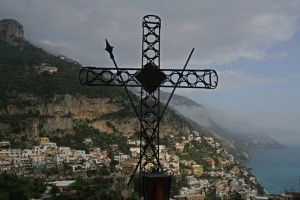 |
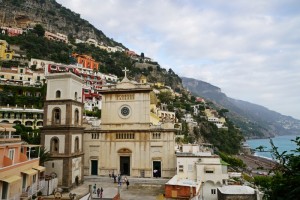 |
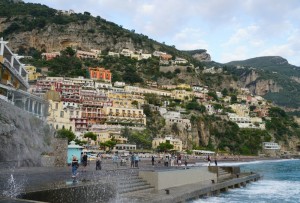 |
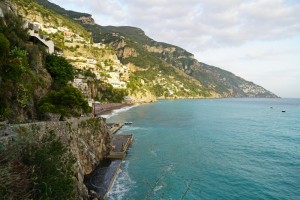 |
We stayed till 6:15pm. On our way to our villa, we were excited to find a full moon lighting up the enchanting Mediterranean Sea at our footstep! We had Parma ham, a bottle of the 2011 red wine brought by Rupert from the vineyard Venditti, linguine and fish for dinner. The wine has a wonderful aroma and is smooth with a light body. We like it so much that we order seven cases. The airfreight cost is reasonable and we can have a nice bottle of wine for €20. A bargain!
October 16 Sunday: Path of the Gods & Amalfi
I have read about the ‘Path of the Gods’ from Bomerano, a fraction of Agerola to Nocelle, upper part of Positano. Given the age and fitness of the group, Ben suggested we take a shorter trail of 7.8km from Nocella to Praiano. This hike is described as ‘easy’ and would take about three hours. We left the villa at 10am. But by the time we reached the starting point, it’s already 11:30am. It was a sunny and very hot day.
The trail is well-signed with a ‘white-red’ mark. It was very crowded with families and groups. We met two large groups with about 100 hikes coming from Rome for a day’s hike.
The views over the Amalfi Coast stretching from Capri to Amalfi are awesome with dramatic cliffs, lush green vegetation, barren limestone cliffs, picturesque hamlets, boats and dream-like islands in the middle of the sea. Some parts of the trail are treeless. Aliena who cannot stand the heat had a crimson face. Rupert and I walked with her while Bing charged ahead. Rupert reminded his wife to drink water. Otherwise it’s easy to have heatstroke.
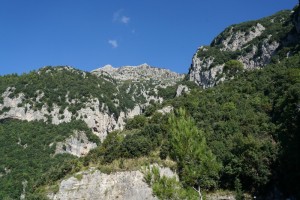 |
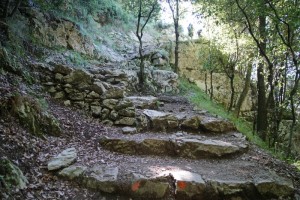 |
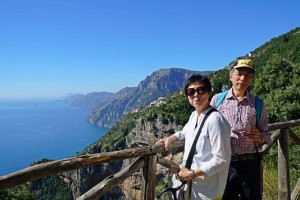 |
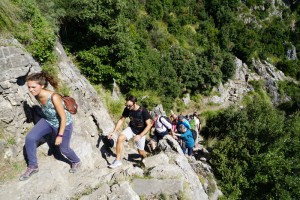 |
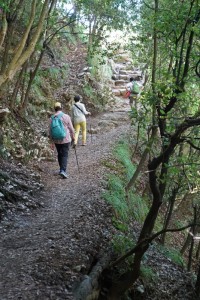 |
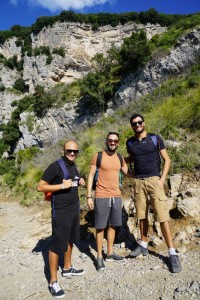 |
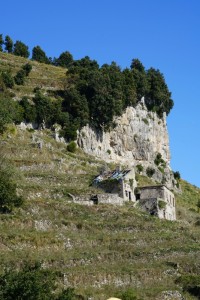 |
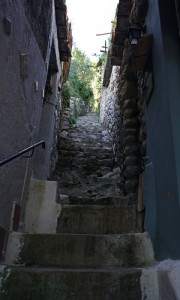 |
We were supposed to meet Ben at the Cathedral Square at Praiano at 4pm. But the steep and rocky descend is more difficult than the ascent. We did not arrive at Praiano till 4:30pm. I like Praiano which is tranquil and less spoilt. I love to return and stay here one day.
It was almost 5:30pm when we arrived in Amalfi, a town and comune in the province of Salerno. Lying at the foot of Monte Cerreto (1315m) and surrounded by dramatic cliffs and coastal scenery, it was the capital of the maritime republic known as the Ducky of Amalfi which was an important trading power in the Mediterranean between 839 and 1200. In 1343, the port and lower town were destroyed by a tsunami. Amalfi has been a destination for visitors including composer Richard Wagner and playwright Henrik Ibsen since the 19th century. In the 1920s and 1930s, it was a popular destination for the British upper class.
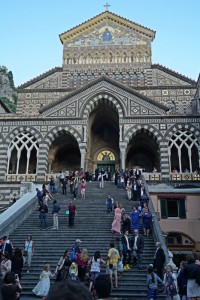 |
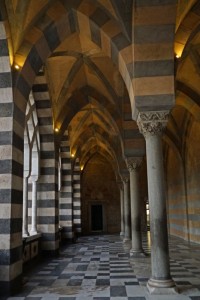 |
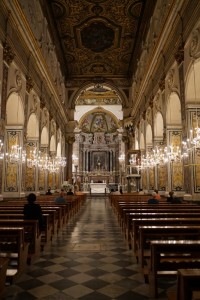 |
As we only had an hour, we walked along the main street and bought a small quantity of Parma ham and cheese which would go well with our wine. Then we climbed the staircase to the majestic St Andrew Cathedral (11th century) with a facade in Byzantine style with a large fresco of St Andrew which overlooks the main square. I went into the cathedral which awesome interior was built in Baroque style with a nave and two aisles divided by 20 columns. In 1206, the Saint’s relics were brought here from Constantinople and are kept in its crypt.
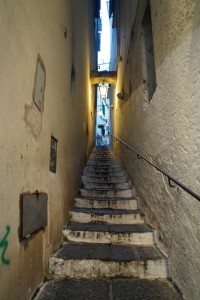 |
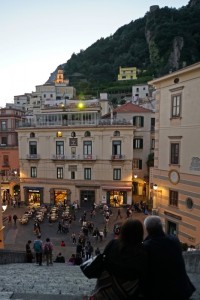 |
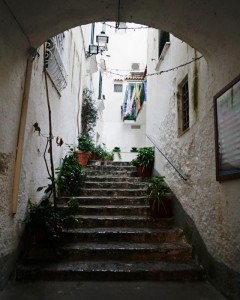 |
I love to visit the ‘Cloister of Paradise’ built between 1266 and 1268 as the burial ground of noble families. It is essentially an open-air museum with remarkable architecture. But I had to give it a miss and hope to return soon to spend more time in this lovley area of Italy.




